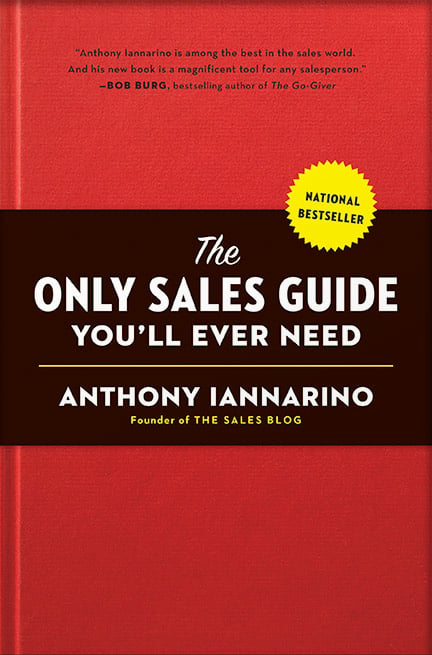The Gist:
- One of the easiest ways to recognize your sales approach is to look at the level of value you create for your clients.
- The lower the level of value you create, the more likely that you have a legacy approach.
- The greater value you create, the more modern your approach.
In 2011, I was asked to help a client’s strategic account management team improve their results. Their company was considering removing the team completely: over time, they had turned into something like “glorified customer service,” and it was their leadership’s belief that they were not making a contribution. The concept of the four levels of value helped them decide what work they should and should not do.
One of the easiest and fastest ways to determine the maturity of your sales approach is to recognize the level of value you create for your clients. Lower levels of value indicate an older legacy approach to B2B sales, but reaching higher levels suggests that you are closer to a modern sales approach.

From Legacy to Modern Sales Approaches Parts 1-8:
- Part 1 | Approaches
- Part 2 | The Starting Question
- Part 3 | Information
- Part 4 | Discovery
- Part 5 | Stakeholders
- Part 6 | Objections
- Part 7 | Who Leads
- Part 8 | Locus of Value
Legacy Laggard: Transactional Approach
The first level of value (Level One) is the value found in your product or service. The fact that this is the lowest value you can create doesn’t mean that it isn’t important. Those sales organizations and salespeople who have a transactional approach to sales generally believe this is the level of value they need to create for their clients. Believing that the product or service creates the value your client needs identifies you as a commodity, so be prepared for your clients to treat you as such.
The second level of value (Level Two) is the value of your service, support, and how easy it is to do business with you. When you sell using a transactional approach, you often hear concerns about the service and support the client might need if they have a problem. Being able to address any concerns about using what you sell is often done by describing how you take care of your clients.
Salespeople (still) using the legacy laggard approach pitch their product and services, relying on the first two levels of value. But in B2B sales, even if you do sell a commodity, there is little benefit in limiting your value to Level Two. In fact, the legacy laggard approach was replaced by the legacy solution approach because it didn’t create enough value to differentiate the salesperson’s offering. It also failed to create a preference to buy from the salesperson: because the first two levels are easily commoditized, price dominated buying decisions.


Legacy Solution: Level Three Value
By moving from valuing products to valuing solutions, legacy solution salespeople were able to create a higher level of value, generating tangible results by solving problems. The search for a problem is the very heart of the legacy solution approach to B2B sales. This approach released the creativity of sales organizations and salespeople, prompting them to develop innovative ways to help their clients solve problems.
The best way to understand this is through an example. Imagine a Chief Marketing Officer who needs to communicate to their company’s potential customers. They buy from a salesperson who doesn’t simply sell them printing, but instead sells them a campaign where they print the offer, fold the paper, and send the offer to women between the ages of eighteen and thirty-two in the southeastern part of the United States. The sales organization successfully sends the mail and it arrives in the right mailboxes.
That tangible result is an example of Level Three value. If you sell payroll services, deposits being made in the correct bank accounts is a tangible business result. If you sell IT services, keeping your client’s technology working is also Level Three. When the majority of competitors in a market can all create the same level of value, there tends to be an evolution that allows for a competitive advantage.


Modern Approach: Strategic Value
The modern approach recognizes the fact that the first three levels of value (product, experience, and problem solved) are table stakes, especially since Level Three has now been commoditized in many industries. That brings us, finally, to Level Four, the strategic level of value. To make this level clear, we need to go back to our CMO and their campaign. The letters were printed, folded, and mailed. Each letter found its way into the right mailbox, an important result. But that wasn’t the strategic outcome the CMO needed. The purpose of the mailing was to acquire new customers for a credit card that would appeal to women in a certain demographic.
Similarly, a company might outsource payroll, a necessary business process, to an outside vendor. This investment could have many strategic outcomes. Maybe it allows the company to invest in other areas of their business. Maybe it lets them move employees to areas where they can create greater value for their company. Or maybe the payroll service allows them to offer their employees better benefits or an experience that increases retention, a truly strategic outcome.
There are some approaches that masquerade as modern, leaving out the strategic level of value. Mostly, they are riffs on a legacy solution approach. As the world is increasingly complex, the ability to provide a strategic level of value is the differentiator.
Read the next chapter in the series: Part 10 | The Sales Process
Do Good Work
- Avoid transactional approaches when what you are selling is not a true transaction.
- Recognize the areas of your approach that don’t create enough value for your client and work towards changing them.
- When you create Level Three value, ask yourself what strategic value the client is really pursuing.

Get the Free eBook!
Learn how to sell without a sales manager. Download my free eBook!
You need to make sales. You need help now. We’ve got you covered. This eBook will help you Seize Your Sales Destiny, with or without a manager.
Download Now










